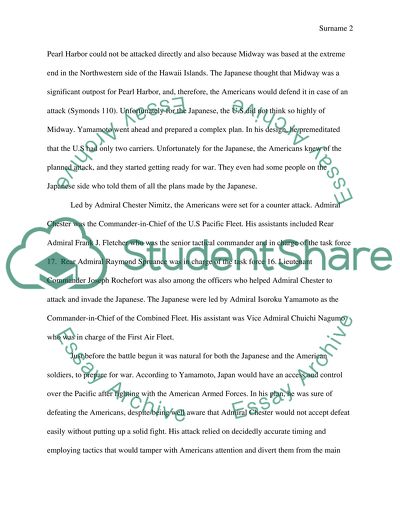Cite this document
(“Battle of Midway Research Paper Example | Topics and Well Written Essays - 2000 words”, n.d.)
Retrieved from https://studentshare.org/history/1479243-the-turning-point-of-the-war-in-the-pacific-battle
Retrieved from https://studentshare.org/history/1479243-the-turning-point-of-the-war-in-the-pacific-battle
(Battle of Midway Research Paper Example | Topics and Well Written Essays - 2000 Words)
https://studentshare.org/history/1479243-the-turning-point-of-the-war-in-the-pacific-battle.
https://studentshare.org/history/1479243-the-turning-point-of-the-war-in-the-pacific-battle.
“Battle of Midway Research Paper Example | Topics and Well Written Essays - 2000 Words”, n.d. https://studentshare.org/history/1479243-the-turning-point-of-the-war-in-the-pacific-battle.


